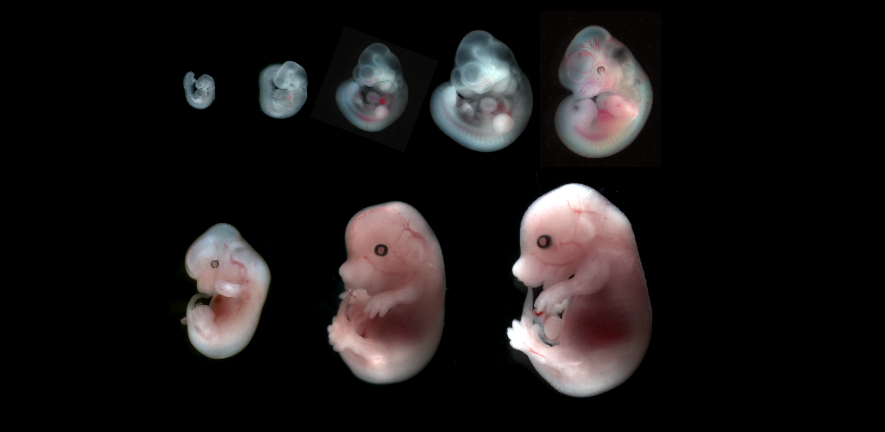International Conference on Advanced Metabolomics and Systems Biology
Theme: Crack the Mystery Behind Advanced Metabolomics and Systems Biology
Date: September 24-25, 2018
Conference Venue: Philadelphia, USA
Saturday, 26 May 2018
Monday, 7 May 2018
Track 16 : Synthetic Biology
Synthetic biology is an emerging field that potentially offers an indefinite number of possibilities and potential applications. Synthetic biology pursues to make the engineering of biological systems easier and more predictable. Synthetic biology is characterised by a dual definition, aiming on the one hand to construct new biological parts, devices and systems, and on the other hand to re-design existing parts.

Synthetic biology is an emerging field that potentially offers an indefinite number of possibilities and potential applications. Synthetic biology pursues to make the engineering of biological systems easier and more predictable. Synthetic biology is characterised by a dual definition, aiming on the one hand to construct new biological parts, devices and systems, and on the other hand to re-design existing parts.

Track 15 : Structural Biology
Structural biology is a branch of molecular biology, biochemistry, and biophysics concerned with the molecular structure of biological macromolecules, especially proteins and nucleic acids, how they acquire the structures they have, and how alterations in their structures affect their function. Macromolecules carry out most of the functions of cells, and it is only by coiling into specific three dimensional shapes that they are able to perform these functions. The methods that structural biologists use to determine their structures generally involve measurements on vast numbers of identical molecules at the same time.

Structural biology is a branch of molecular biology, biochemistry, and biophysics concerned with the molecular structure of biological macromolecules, especially proteins and nucleic acids, how they acquire the structures they have, and how alterations in their structures affect their function. Macromolecules carry out most of the functions of cells, and it is only by coiling into specific three dimensional shapes that they are able to perform these functions. The methods that structural biologists use to determine their structures generally involve measurements on vast numbers of identical molecules at the same time.

Track 14 : Signalling and Cellular Decision Making
Cells sense environmental stimuli and use these to initiate appropriate physiological responses. Cells receive signals, perform detection and transduction with its biochemistry, and grow and die in the cell-environments. Understanding the cellular information processing in healthy and diseased states and engineering it through synthetic biology requires better insights into the relationship between different interaction motifs found in signalling networks and their potential roles in the ensuing system dynamics.

Cells sense environmental stimuli and use these to initiate appropriate physiological responses. Cells receive signals, perform detection and transduction with its biochemistry, and grow and die in the cell-environments. Understanding the cellular information processing in healthy and diseased states and engineering it through synthetic biology requires better insights into the relationship between different interaction motifs found in signalling networks and their potential roles in the ensuing system dynamics.

Track 13 : Mathematical and Computational Biology
For the continuing health of their subject, mathematicians must become involved with biology. The increasing study of realistic and practically useful mathematical models in population biology, whether we are dealing with a human population with or without its age distribution, population of an endangered species, bacterial or viral growth and so on, is a reflection of their use in helping to understand the dynamic processes involved and in making practical predictions.

For the continuing health of their subject, mathematicians must become involved with biology. The increasing study of realistic and practically useful mathematical models in population biology, whether we are dealing with a human population with or without its age distribution, population of an endangered species, bacterial or viral growth and so on, is a reflection of their use in helping to understand the dynamic processes involved and in making practical predictions.

Track 12 : Therapeutics/Pharmacology
Systems pharmacology has deep connections, conceptual and historical, to physiology and classical pharmacology, as well as to newer systems biology and omics approaches. Pharmacology is an inherently multi-scale discipline that seeks to integrate knowledge gained through molecular studies in simple biological settings. Systems pharmacology adds “vertical integration” to the existing discipline of systems biology and a strong commitment to studying drugs in humans.

Systems pharmacology has deep connections, conceptual and historical, to physiology and classical pharmacology, as well as to newer systems biology and omics approaches. Pharmacology is an inherently multi-scale discipline that seeks to integrate knowledge gained through molecular studies in simple biological settings. Systems pharmacology adds “vertical integration” to the existing discipline of systems biology and a strong commitment to studying drugs in humans.

Track 11 : Developmental Biology
Developmental biology involves original research on mechanisms of development, differentiation, and growth in animals and plants at the molecular, cellular, genetic and evolutionary levels. Areas of particular research include transcriptional control mechanisms, embryonic patterning, cell-cell interactions, growth factors and signal transduction, and regulatory hierarchies in developing plants and animals.

Developmental biology involves original research on mechanisms of development, differentiation, and growth in animals and plants at the molecular, cellular, genetic and evolutionary levels. Areas of particular research include transcriptional control mechanisms, embryonic patterning, cell-cell interactions, growth factors and signal transduction, and regulatory hierarchies in developing plants and animals.

Subscribe to:
Comments (Atom)
